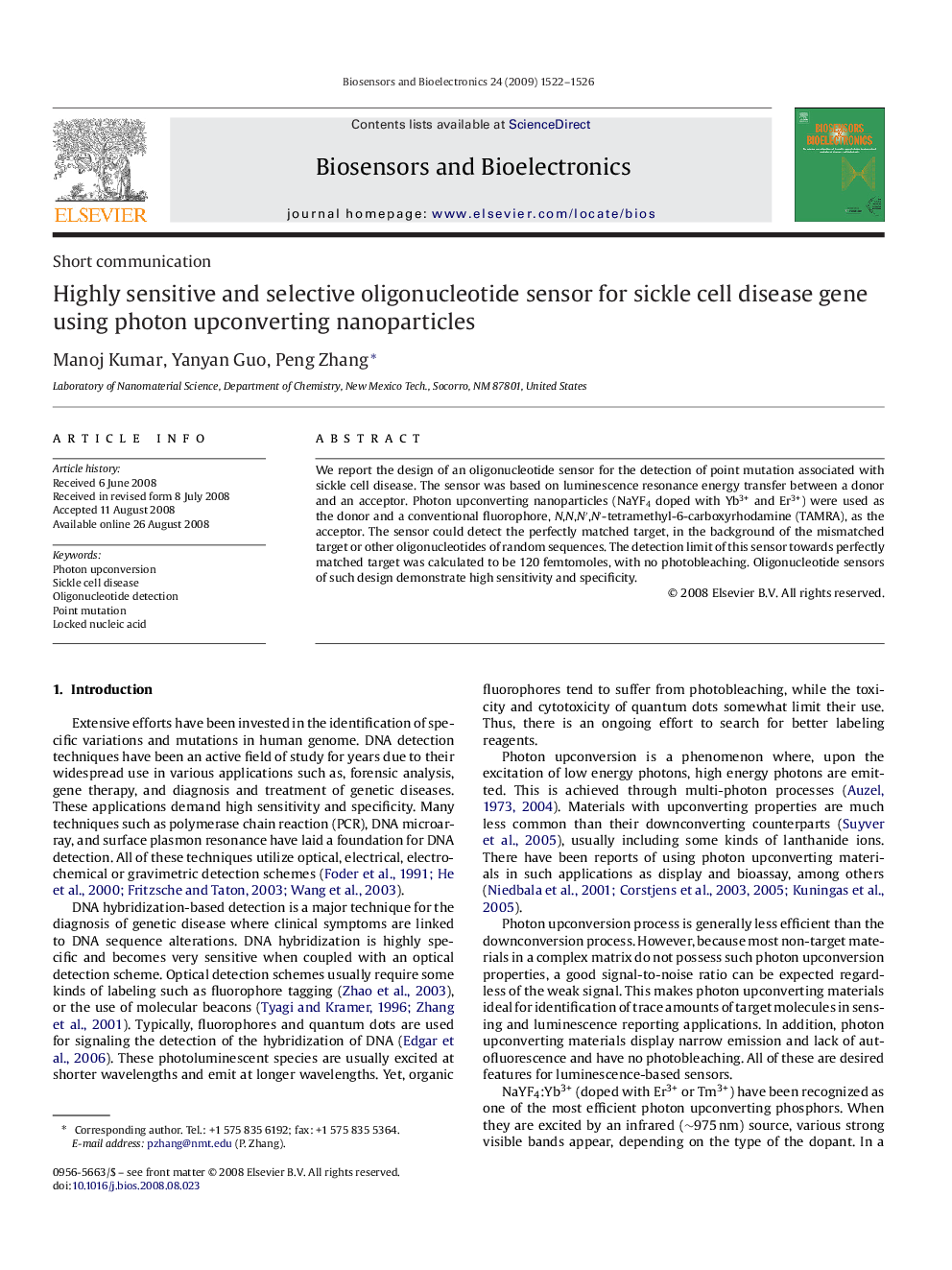| کد مقاله | کد نشریه | سال انتشار | مقاله انگلیسی | نسخه تمام متن |
|---|---|---|---|---|
| 868909 | 909815 | 2009 | 5 صفحه PDF | دانلود رایگان |

We report the design of an oligonucleotide sensor for the detection of point mutation associated with sickle cell disease. The sensor was based on luminescence resonance energy transfer between a donor and an acceptor. Photon upconverting nanoparticles (NaYF4 doped with Yb3+ and Er3+) were used as the donor and a conventional fluorophore, N,N,N′,N′-tetramethyl-6-carboxyrhodamine (TAMRA), as the acceptor. The sensor could detect the perfectly matched target, in the background of the mismatched target or other oligonucleotides of random sequences. The detection limit of this sensor towards perfectly matched target was calculated to be 120 femtomoles, with no photobleaching. Oligonucleotide sensors of such design demonstrate high sensitivity and specificity.
Journal: Biosensors and Bioelectronics - Volume 24, Issue 5, 1 January 2009, Pages 1522–1526